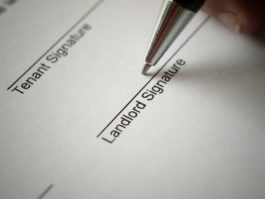Your Practical Guide to Mortgage Escrow Accounts
Share
An escrow account is used to set aside money for annual property taxes and homeowners insurance. Your mortgage lender manages this account on your behalf. You fund this account by paying a predetermined amount of money into it each month. Then, your lender uses that money to pay taxes and insurance premiums on your home.
This protects the lender, because it ensures that those taxes and premiums are paid on time and in full. But, you can also think of an escrow account as a helpful budgeting tool for yourself, because it spreads out payments on what would otherwise be large lump sums. Property taxes and homeowners insurance premiums are due only once each year, but are large expenses that for most homeowners will require planning and saving toward.
If you're wondering how the entire process of buying a home works, read our Complete Guide to Homebuying on a Budget. This invaluable resource offers everything you need to know about buying a home, from setting your budget to move-in day.
How It Works
Each month, you make your mortgage payment, which obviously includes your principal payment plus the interest on your loan. If your mortgage agreement includes an escrow account, you will also be paying some extra money on top of that balance-plus-interest sum. The extra goes straight into your escrow account, and is usually one-twelfth of the estimated total annual taxes and insurance costs for your home. (We’ll get more into the “estimated” aspect in a moment, but just push that toward the back of your mind for now.)
So, say the annual property taxes on your home are $2,440. Your annual homeowners insurance premium costs $1,228. Added together, that equals $3,668. That means that each month, you should pay one-twelfth of $3,668 – or $305.67 – into your escrow account.
All that money stays put in your escrow account, adding up over the year, until your mortgage servicer uses it to pay the tax man, and your homeowners insurance premium whenever that comes due. Then the cycle starts all over again for the next year.
Note that when you first close on your house, you’ll likely also fund your escrow account in advance with what’s known as a “cushion.” This cushion typically amounts to two months’ worth of the payments, or one-sixth of the total annual estimate.
Where The Numbers Come From
Now to the burning questions: How does my lender come up with those numbers for my escrow payments? And, what if he or she is wrong?
Lenders look at tax and insurance rates to come up with a reasonable estimate of how much you’ll owe each year. Sometimes, the estimate may be off, and in that case you’ll have either a surplus or a shortage.
Maybe there was a shakeup in the local government and your property tax rates went down – wonderful news! This may mean that you have overpaid into your escrow account. Your lender should inform you of this surplus in an escrow statement, and then you can start checking the mail for your refund check.
Perhaps you finally went ahead and did that remodeling project you’ve been talking and talking about. It looks great, and it’s added to the value of your home. Congratulations! But a higher home value also means higher taxes. You may now have a shortage and you should be informed of this in your escrow statement. Your lender could cover this shortfall for you initially in order to keep those taxes paid on time. You could then have two choices on how to handle this shortage. You could pay it all back as one lump sum, or you could opt to spread out the payments over the next year. So if your taxes went up $600, you could either write your lender a check for the full $600, or you could tack another $50 onto each monthly payment for the next year.
Each year, your lender will perform an escrow analysis, looking at the previous year’s tax and insurance rates, monthly payments, and disbursements, to determine whether the estimate for the new year should go up, go down, or stay the same.
Do I Have to Have Escrow?
Some of you may now be saying to yourselves: “Well that’s all well and good, but I do just fine on budgeting and saving for myself. I never have a problem paying my bills on time. Do I have to use an escrow account?”
It depends. Any government-backed home loan, like, for example, a Federal Housing Administration-insured mortgage, will require escrow throughout the term of the loan. Otherwise, it’s up to your lender. You may be able to opt out of escrow if you make a substantial down payment on the home, and/or have a very favorable loan-to-value ratio. But if you do forego escrow, your lender could raise the interest rate on your loan, in order to make up for what they may consider an additional risk to them.
Click here to set up an appointment with a Member One mortgage specialist.
You May Also Like

Investing in an income property now could be very lucrative. But before you start buying up homes, here are a few ways to prepare yourself for this venture.

I had a million questions that not even Google could answer (hard to believe, I know), so here are a few nuggets of advice for all you new homebuyers out there.

Check out this list of six less common features to consider while house hunting, courtesy of Member One’s mortgage experts.